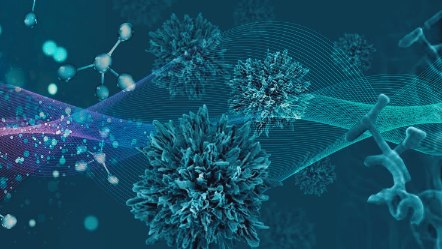Introduction
Nanotechnology, the science of manipulating matter at the atomic and molecular scale (1–100 nanometers), is reshaping modern medicine. By engineering materials smaller than a human cell, researchers are unlocking groundbreaking ways to diagnose, treat, and prevent diseases. From targeted cancer therapies to real-time health monitoring, nanomedicine is projected to grow into a multi-billion-dollar industry, offering solutions to once-insurmountable medical challenges. Let’s delve into the transformative role of nanotechnology in healthcare.
-
Precision Drug Delivery: Smarter, Safer Treatments
Traditional drug delivery often struggles with precision, affecting healthy cells and causing side effects. Nanoparticle drug delivery systemssolve this by transporting medication directly to diseased cells.
- Liposomes: These lipid-based nanoparticles encapsulate drugs, protecting them until they reach their target. For example, Doxil®, a FDA-approved nanotherapy, delivers chemotherapy agents to tumors while minimizing damage to healthy tissue.
- Polymer Nanoparticles: Biodegradable polymers release drugs gradually, improving chronic disease management.
This targeted approach enhances efficacy, reduces dosage, and minimizes adverse effects—revolutionizing treatments for cancer, diabetes, and neurological disorders.
-
Advanced Diagnostics and Early Disease Detection
Early diagnosis saves lives, and nanotechnology excels in detecting diseases at their inception.
- Quantum Dots: These semiconductor nanoparticles emit specific light wavelengths when exposed to UV, enabling high-resolution imaging of cancer cells.
- Gold Nanoparticles: Used in rapid diagnostic tests (e.g., pregnancy or COVID-19 lateral flow assays), they bind to biomarkers, creating visible color changes.
- NanoSensors: Tiny devices detect biomarkers in blood or breath, offering non-invasive monitoring for conditions like diabetes or lung disease.
Such innovations allow for earlier interventions, significantly improving patient outcomes.
-
Revolutionizing Cancer Treatment
Cancer therapy’s biggest challenge is selectively destroying malignant cells. Nanotechnology offers smarter solutions:
- Theranostics: Combining therapy and diagnostics, iron oxide nanoparticles can image tumors via MRI and then generate heat to destroy them when exposed to magnetic fields.
- Nanoemulsions: Delivering radiation directly to cancer cells, sparing healthy tissue.
These methods enhance precision, reduce recurrence, and improve quality of life during treatment.
-
Regenerative Medicine and Tissue Engineering
Nanomaterials are pioneering advancements in repairing damaged tissues and organs:
- Nanoscaffolds: Structures made of graphene or carbon nanotubes mimic natural tissue, guiding cell growth for nerve regeneration or bone repair.
- Stem Cell Therapy: Nanoparticles track stem cell distribution in the body, optimizing treatments for spinal cord injuries or heart disease.
Such innovations promise to heal injuries once deemed irreversible.
-
Combating Infections with Antimicrobial Nanomaterials
With antibiotic resistance rising, nanotechnology offers new ways to fight infections:
- Silver Nanoparticles: Integrated into wound dressings, they combat bacteria like MRSA.
- Nano-Coatings: Applied to medical devices, they prevent biofilm formation, reducing hospital-acquired infections.
These solutions provide potent, scalable alternatives to traditional antibiotics.
-
Challenges and Ethical Considerations
Despite its potential, nanotechnology faces hurdles:
- Safety: Long-term effects of nanoparticles on the body and environment remain under study.
- Regulation: Standardizing testing and approval processes is critical for safe adoption.
- Cost: Scaling production while maintaining affordability is essential for global access.
Addressing these challenges requires collaboration between scientists, policymakers, and ethicists.
-
The Future of Nanotechnology in Medicine
The horizon of nanomedicine is brimming with possibilities:
- Nanorobots: Microscopic machines could perform surgeries, clear arterial blockages, or deliver genes.
- AI-Designed Nanoparticles: Machine learning accelerates the creation of custom nanomaterials for personalized therapies.
- Neuro-Nanotechnology: Interfaces connecting the nervous system to prosthetics could restore mobility for paralysis patients.
As research advances, nanotechnology may soon make today’s sci-fi scenarios a medical reality.
Conclusion
Nanotechnology in medicine is not just a trend—it’s a paradigm shift. From eradicating tumors with pinpoint accuracy to regenerating organs, its applications are vast and transformative. While challenges exist, the potential to save millions of lives is undeniable. Staying informed about these advancements ensures we’re ready to embrace a future where nanomedicine is mainstream.
Call to Action: Follow our blog for the latest updates on medical innovations, and share this article to spread awareness about nanotechnology’s life-saving potential!
